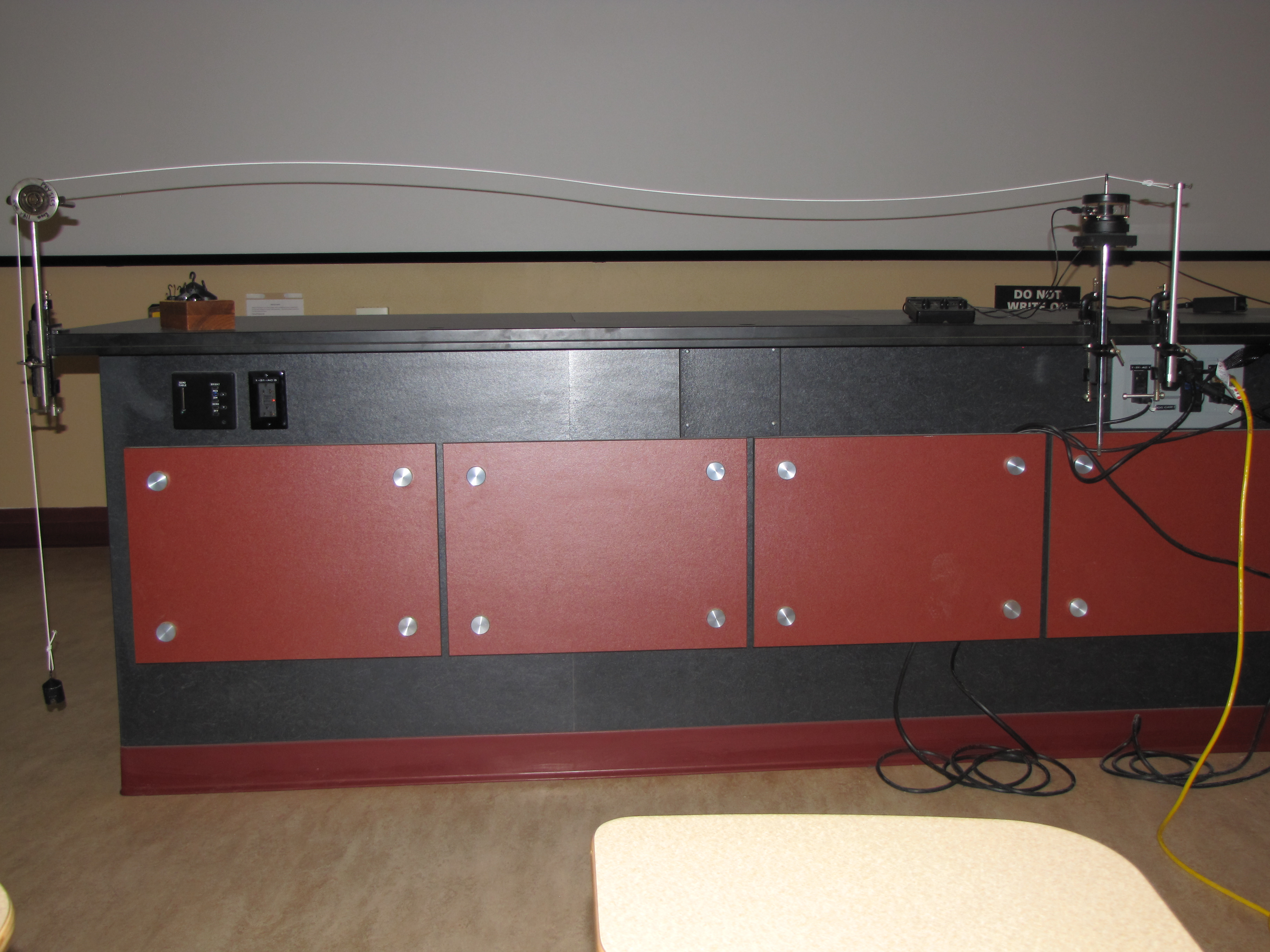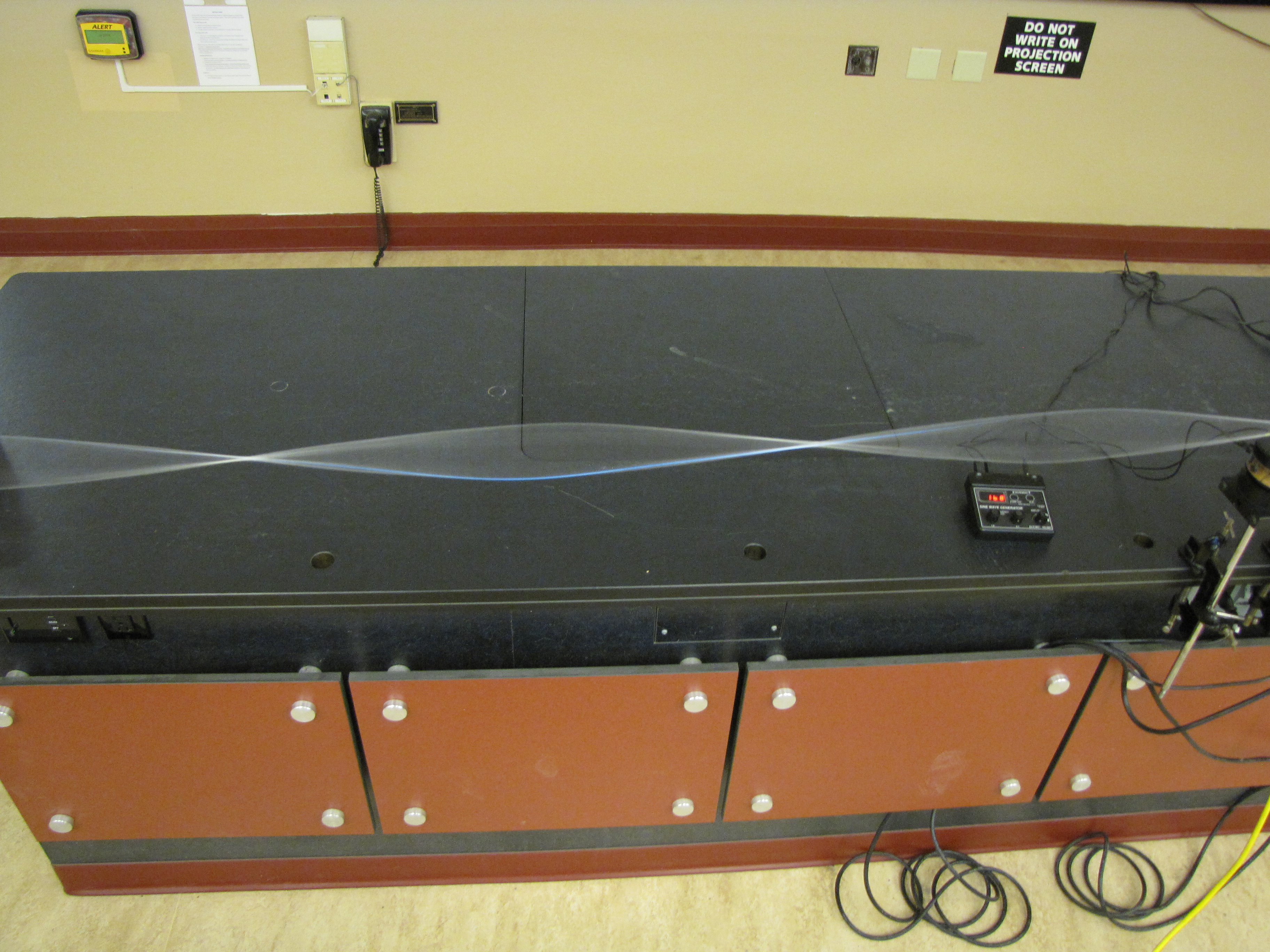Demos: 1S-41 Standing Waves in Rope


A heavy cord is attached at one end to the vibrating mechanism of a jig saw, whereas the other end passes over a pulley and has a weight attached to provide tension in the cord. By adjusting the speed of the jig saw and/or adjusting the tension in the cord, a variety of standing wave patterns are generated. A strobe light enables one to see the slow movement of the standing wave.
Directions: With a weight attached at one end, start the jig saw moving and adjust the speed by means of the Variac. Change the voltage slowly and watch for the standing wave patterns. Dim the room lights and turn on the strobe. With proper adjustment of the strobe, the standing wave can be made to “stand still” or slowly move up and down. NOTE: You should warn the students if you are about to use the strobe in case there is a person who might be subject to seizures associated with a slowly flashing light.
Suggestions for Presentation: Point out to the students that although the vibrating mechanism moves the end of the cord up and down, this motion is small compared with the overall amplitude of the wave and thus this end still behaves as a “fixed” end. You should use the strobe in this demo, because it is quite dramatic to see the rope moving very slowly or almost standing still when it is evident that the real motion is quite fast.
Applications: This a basic demo for standing waves in one dimension and is not directly applicable to common objects.
Last Updated: Nov 30, 2023 11:25 AM